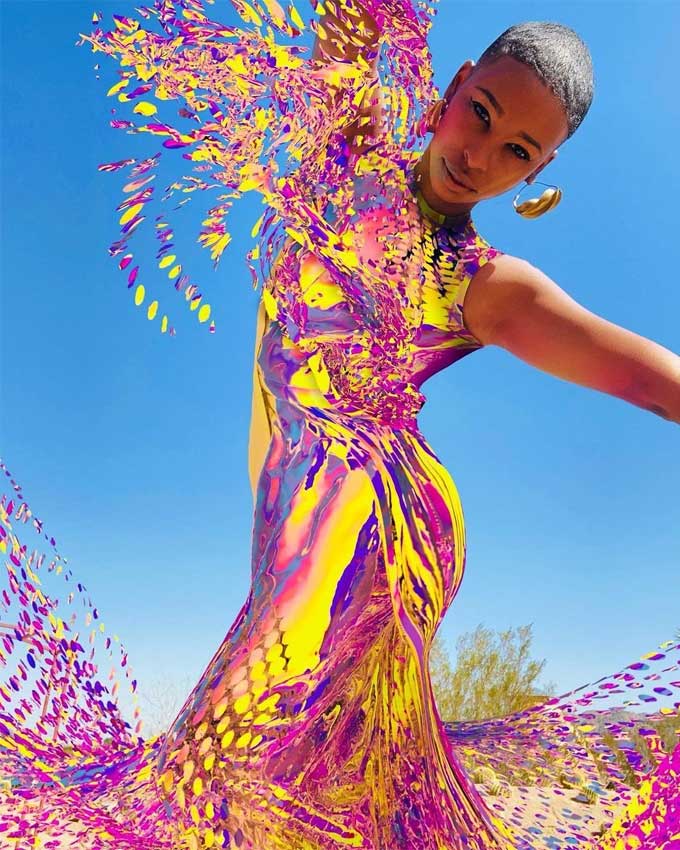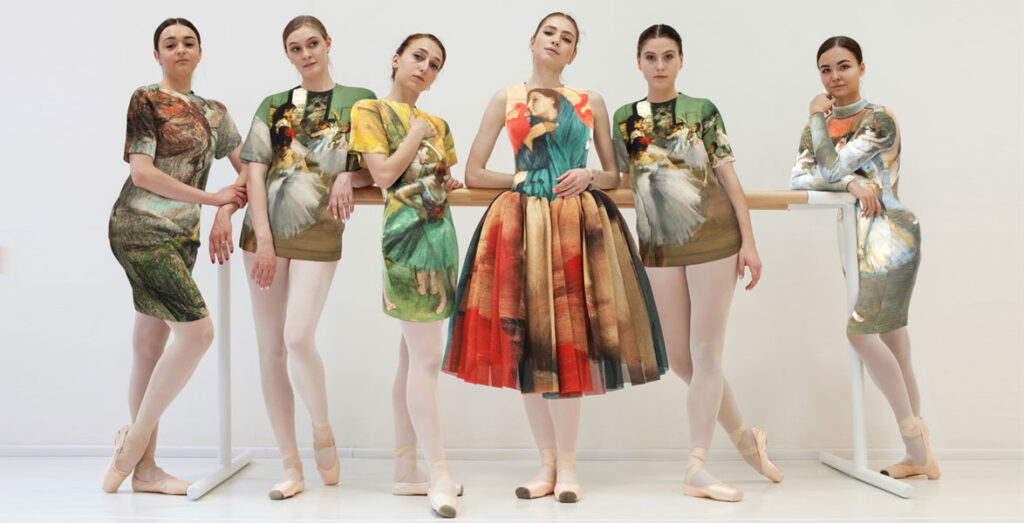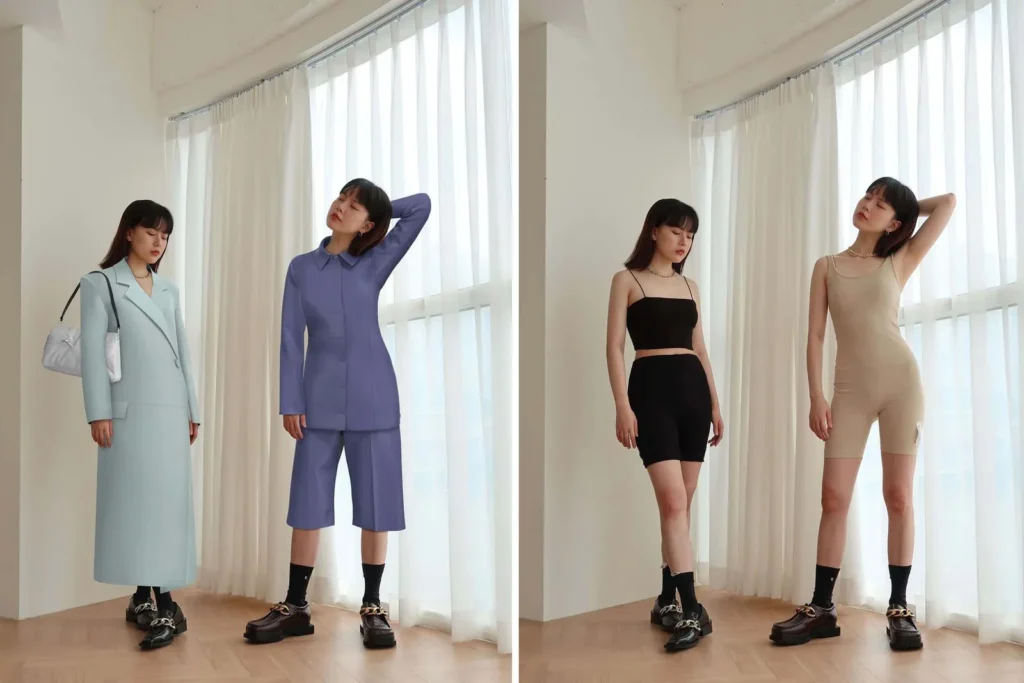Do you know that Amber Jao Slooten, the co-founder of The Fabricant, did a traditional fashion course, but went on to become the first ever student to graduate with an entirely digital collection? There are many designers like her who have made the switch to digital fashion. What prompted them to make this decision? What is so appealing about creating outfits for consumers’ virtual wardrobes?
When we collaborated with Erika Wang, she mentioned how digital fashion opened up endless opportunities with respect to creativity and brand visibility, especially during the pandemic. In this blog, we discuss these points and more in detail, and understand why digital fashion is gaining rising popularity among fashion designers.
- Sustainability: To Contribute To Ethical Fashion
Source: The Fabricant
When you design a ready-to-wear digital outfit or even a digital sample, you are not relying on real fabrics, other raw materials, or shipments to arrive, for designing the outfit. Additionally, physical samples are created only when necessary and after thorough assessment on the 3D visualisation tools. This means, fewer samples in the dumping grounds and minimum wastage of resources. As responsible members of the fashion industry which is known for its atrocities towards the health of the environment, this is a huge plus for designers. Also, according to the fashion app Lyst, in 2020, the search increased for sustainability-related keywords by 37%.
So, when consumers themselves want to associate with people who promote sustainable fashion, it furthermore boosts the designers to take up this route.
To be able to do what they love and contribute meaningfully without causing much damage to the environment is a particularly appealing factor for many designers.
Amber Jae Slooten, creative director at The Fabricant says, “I’m educated as a traditional fashion designer. I learned everything at my school; how to sew, how to make patterns. But I got really sick of all the material that I was using. The physicality of things is something that I never really enjoyed. 3D modelling is fantastic. There’s no material wastage, you can create anything and as a designer, it’s a very new way of working.”
2. Creativity: To Explore The Scope Of Design Beyond The Laws Of Physics

In the virtual setting, where the laws of physics don’t exist, the canvas is blank and wide for designers. They can bring their true creative skills to life and go crazy with their imagination. All the abstract concepts in their head no longer have to be abstract because digital fashion gives them wings to add to their dresses and fire flames to their sneakers if they wish to!
To give their creative imagination the playing ground it deserves without going overboard with the budget, digital fashion is an excellent choice.
Like Matthew Drinkwater, head of the Fashion Innovation Agency, London, says, “Suddenly those harnesses are released and you can begin to go beyond what anyone has ever seen before.”
3. Time: To Design Quicker Without Depending On The On-Ground Logistics

When the product development phase is digitised from the very beginning, designers don’t have to spend hours or days waiting for a fabric to reach the store to make one tiny change to the outfit. With shipping and physical sampling out of the picture, they can make as many changes as they want without waiting for anyone.
Especially during a time like this, designers are relieved that they do not have to deal with the uncertainties of the traditional supply chain and can make their samples reach their consumers quicker.
Neha Celly, founder of Nece Gene, a sustainable denim label says, “Due to the pandemic, there are a lot of logistical issues involved in production right now. If we make the same design on CLO3D, the entire sampling process and time to market is reduced drastically.”
4. Feedback: To Receive Real-Time Responses Before Launching The Collection

Source: Vogue Business
Earlier, designers had to launch the whole collection to gain response and feedback from their audience. With digital fashion, they now have the chance to virtually launch a limited edition and understand how their target audience likes it. Since the feedback is immediate and real, they can make changes if needed before taking the physical collection live.
For instance, in September 2021, Farfetch along with Dress-X sent digital samples to influencers for the promotion of their pre-order offering from brands like Balenciaga, Palm Angels, Dolce & Gabbana, etc. Once the influencers selected the look of their choice, they provided their images to Farfetch. The digitally imposed images were uploaded once reviewed by the parties involved. This is how they tested their products in the market before mass producing samples which people might not end up buying.
This way, digital fashion gives full justice to the time and efforts they put in for the collection. By the time they launch, they already have a fair idea of the expected response.
Dorothy Di Stefano, founder/director at art collective Molten Immersive Art says,
“Based on feedback and popularity, designers get a sense of what will sell before committing to production. Customers also have a sense of agency in the process, deepening relationships with labels.”
5. Low Cost: To Invest In Less Expensive Courses

Source: Taylor & Francis Online
Often, the courses in traditional fashion are not feasible for everyone, thanks to their high fees. While there are courses for digital fashion like the MA programme at The University for the Creative Arts in Farnham, UK, learning to do digital designs has become easier than before. The multiple online forums/ communities, intuitive design tools for basic understanding, and feasible online courses have made the process of learning digital fashion easier.
Since a good laptop, internet connection, and a 3D software license are all what you need to start learning digital designing, upcoming designers are inclined towards it.
Matthew Drinkwater, head of London College of Fashion’s Innovation Agency says,
“There is a growing acceptance that alongside physical collections, designers will create digital collections and virtual fashion will become a core part of the fashion business model going forward.”
Key Takeaways:
- Contributing meaningfully via tech-enabled sustainable solutions is an appealing factor for many designers.
- Digital fashion gives complete liberty to designers to go crazy with their imagination.
- Thanks to digital fashion, designers do not have to worry about the uncertainties of the traditional supply chain.
- Designers leverage the power of digital fashion to validate their efforts put into making a collection. They launch a limited collection virtually so as to gauge the feedback/ response beforehand and make changes if necessary.
- Upcoming designers are attracted to the feasible and intuitive nature of the digital designing tools and easily accessible online communities/ forums, which might be less expensive than a course in traditional fashion.
With the advancement of 3D tools and software, we will see more and more designers opting the digital route. Kerry Murphy, founder of The Fabricant agrees, “Every fashion designer is going to be a digital fashion designer in 25 years from now.”
If you are slowly venturing into this space, we at Neo Marche can help you with digital lookbooks, digital campaigns, and a customised virtual kiosk on our virtual marketplace to improve your visibility.


